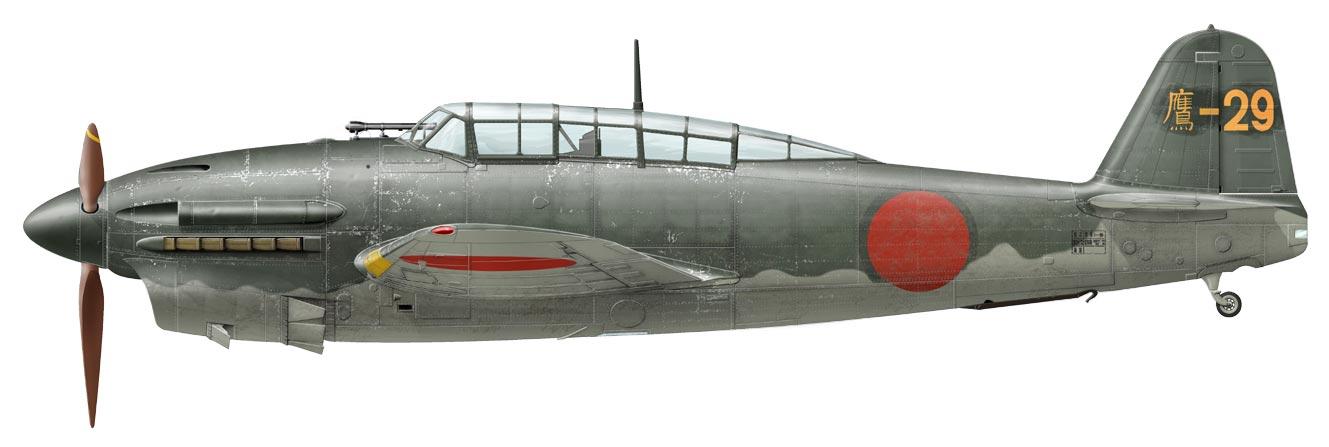In 1938, the Japanese Imperial Navy’s First Naval Air Technical Arsenal based at Yokosuka began the design and development of a new, single engine dive bomber for its carrier base platforms. The result was the Suisei or comet. Based upon the highly advance (at the time) Heinkel He-118. The Suisei had the distinction of being one of Japan’s few combat aircraft powered by a liquid cooled engine. The D4Y, as it was designated by the Navy, utilized the powerful German DB 601engine. Built with a pre-war licensing agreement, the DB-601 proved to be more manageable than most Japanese design liquid cooled engines.
The Suisei made her maiden flight in November 1940 and became operational two years later (October 1942). It went on to have a long, albeit, undistinguished career during World War II. There were two main version of the Suisei. The D4Y1-C was a pure reconnaissance platform, while the D4Y1 was a dedicated, dive bombing system. The C entered service in December 1942. While de dedicated bombing platform did so a year later.
Although sound of design, the Suisei did not fare well against the best allied fighters of the day. As it was the case with other Japanese aircraft, the Suisei did not was fitted with self-sealing fuel tanks and armor plating for pilot protection, making them easy prays for predating American and British pilots.
A grand total of 2,038 Suisei were produced before the war ended in August 1945. Later versions were fitted with the more easy to handle, Aichi Atsuta piston engine. Towards the end of the war, the “Judy” as the allied codenamed the dive bomber (both variants), as were most of Japan’s aircraft, was use as a suicide plane.
| Power Plant | One Aichi 1400hp Atsuta 32 piston engine |
| Wingspan | 11.5m |
| Length | 10.22m |
| Height | 3.74m |
| Total Wing Area | 23.6m sq. |
| Maximum takeoff weight | 4250kg |
| Top Operational Speed | 550kph |
| Service Ceiling | 10,700m |
| Climb rate | 820m per minute |
| Range | 1,465km |
